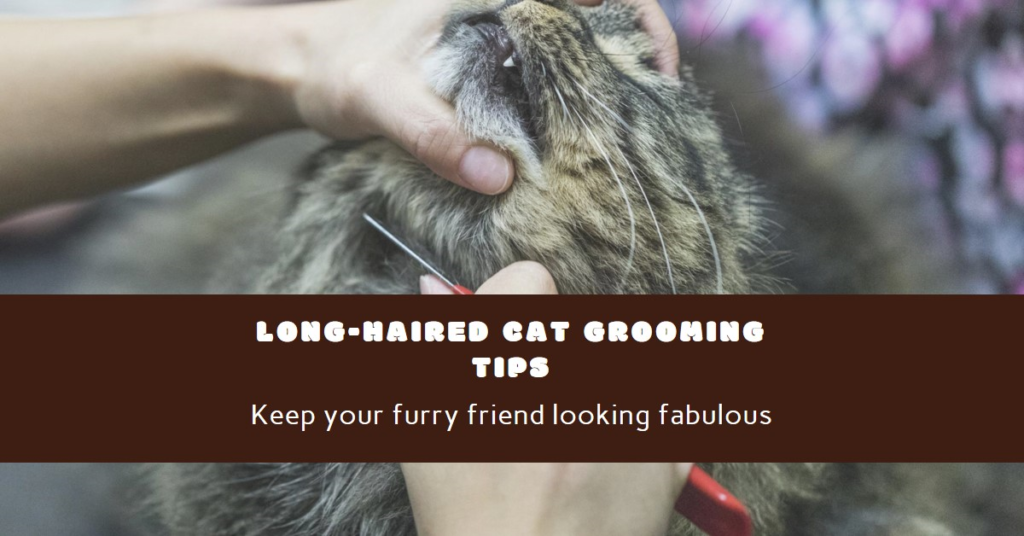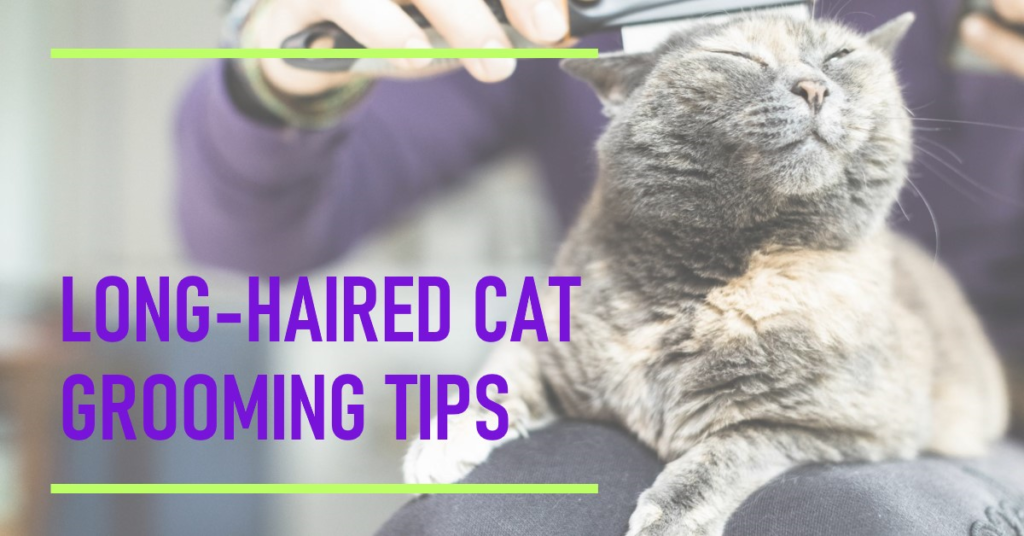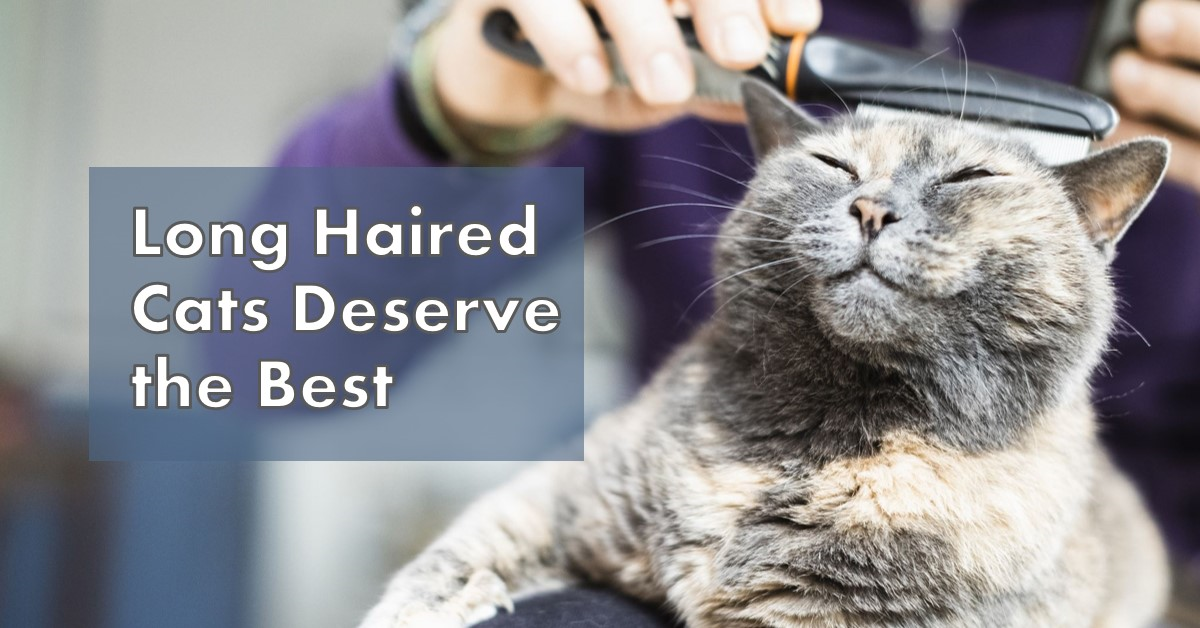Long-haired cats have beautiful coats that require regular grooming to stay detangled and shed-free. Neglecting grooming can lead to painful mats and knots in their fur. With daily brushing and regular bathing as needed, long-haired cats can enjoy the benefits of their lush coat while staying clean and comfortable. Long-haired cats require special grooming care to keep their coat healthy and knot-free. This article discusses important grooming tips for long haired cats to help them look their best.
Some essential grooming tips for long haired cats

Daily Brushing
Daily brushing is essential for long-haired cats to prevent knots and mats from forming in their fur. Start brushing them from a young age so they get used to it. Use a natural bristle brush or comb and start at the neck, brushing towards the tail. Be gentle and patient, brushing in the direction of hair growth.
Check for any tangles and gently work them out. Brushing for 10-15 minutes daily is sufficient to distribute their natural skin oils down the hair shaft and remove loose hair and environmental debris. Regular brushing will keep long-haired cats’ coats beautiful and well-groomed between baths.
Regular Baths
Depending on their lifestyle and environment, long-haired cats should be given baths every 4-6 weeks or as needed. Bathing too frequently can strip natural oils from their skin and coat. Start with a gentle cat-safe shampoo; do not get water in their ears.
Be thorough but brief—no more than 5 minutes—to avoid stressing them. Rinse thoroughly and wrap them in a towel to absorb excess water. Their coat may need additional drying time with a blow dryer on a cool heat setting. Regular bathing helps remove environmental dirt, dander, and odors for clean, long-haired cats.
Detangling Knots
Despite the best brushing efforts, knots sometimes form in a long-haired cat’s coat. When you come across a small knot, brush from the bottom and gently work your way through with your fingers. For larger knots, spray a detangling solution before brushing to help loosen things up.
Be very patient—rushing can cause painful pulling and mats. If a knot is too tight, you may need to cut the hair around it to remove it gently. After detangling, continue daily brushing to prevent new knots from forming. With regular care, knots in long-haired cats’ fur can usually be prevented or removed safely.
Grooming Long-Haired Kittens
It’s important to start grooming long haired kittens from a young age to get them used to it. Gently brush them daily for a few minutes to distribute natural oils and remove loose hair. Check their skin and coat for any problems. Trim longhaired kittens’ nails every 1-2 weeks.
Long-haired kittens that become accustomed to regular brushing from a young age will have healthy, well-groomed coats like adult cats. Early grooming helps the bond between owners and long-haired kittens and eases nail trims and other care needed throughout their lives.
Regular Trims
Regular trims help prevent mats and keep a long-haired cat’s coat at a manageable length. Trim fur that is very long, particularly around the behind, tummy, and back legs. Use small cat grooming scissors or thinning shears, and be careful not to cut their skin.
Brush their fur first to see its natural lying and then trim off only the excess hair. Give trim touch-ups every 4-6 weeks. Trims are especially useful during seasonal shedding times and for the thinner coats of senior long-haired cats. Regular shaping keeps their coat attractive and reduces grooming time needed between baths.
Common Grooming Tools for Long-Haired Cats

It is important to have the proper tools for grooming long haired cats. A slicker brush or comb removes loose hair and distributes natural oils down the shaft. A flea comb tackles tangles and removes debris. Small pet scissors or thinning shears safely trim fur. Nail clippers with a file keep nails short.
A rubber brush or mitt gently removes dirt and stimulates circulation. Brushes vary by coat type – choose ones suitable for your cat’s fur. Quality, cat-safe grooming tools make the process efficient and keep long-haired cats tidy between baths.
Grooming During Shedding Seasons
Seasonal shedding can be heavy for some long-haired cats. Daily brushing is crucial to remove loose hair and reduce fur balls during these times. Bathe them more frequently also to loosen hair that brushing misses. Trim away particularly thick patches of shed fur to ease their discomfort.
Ask your vet about supplements that may help reduce shed hair. Store shed fur clumps in plastic bags for disposal, vacuum regularly, and brush yourself afterward. Extra grooming attention during seasonal changes makes long-haired cats feel fresher.
Caring for Senior Long-Haired Cats
As cats age, their coat may thin while still requiring grooming. More frequent brushing removes weakening hairs to reduce matting. Choose softer bristles to avoid irritation. Trim thinning areas neatly. Bathing needs may increase due to incontinence or other issues.
Gentle cleaning keeps them clean and odor-free. Clip nails carefully due to declining nerve endings. Inspect the skin for lumps, sores, or infections regularly. Senior grooming is loving care that sustains dignity and comfort in older long-haired cats’ golden years.
Grooming Long Haired Cats with Special Needs
For cats with reduced mobility, brush them patiently in small steps, then reward them with praise or treats. Use a mat splitter or detangling spray on particularly knotted fur. Handle very elderly, ill, or blind cats with the utmost kindness. Partner may need assistance during grooming.
Consult vet on safest techniques. Make sessions calming with a gentle touch. Modify routines according to limitations. Extra care, patience, and understanding when grooming special needs long-haired cats respect their dignity.
Travel and Boarding Tips
When traveling or boarding long-haired cats, trim their fur to a comfortable medium length to prevent matting from changes in activity. Include brushes, combs, and detangler spray for on-site care. Provide written grooming instructions and diet preferences.
Consider sedative anti-anxiety supplements for stress relief, as advised by the vet. Pack sweaters or towels to keep nervous cats busy. Clarify that grooming services are available at boarding to ensure continued coat care. Pretrip grooms and communication ease transitions for long-haired cats away from their home environment.
Conclusion
With daily brushing, regular baths when needed, periodic nail trims, and fur shaping, long-haired cats can enjoy beautiful, mat-free coats while their owners keep them looking their best. Getting long-haired cats accustomed to grooming from a young age makes it a pleasant experience for owners and cats alike. Regular grooming is an important part of caring for long-haired cats. Their luxurious fur coats require basic grooming tips for long haired cats to stay healthy, tangle-free, and well-groomed.
Frequently Asked Questions
Q: How often should I brush my long-haired cat?
It is recommended that long-haired cats be brushed daily to distribute their natural skin oils and remove loose hair and environmental debris. This helps prevent matting and keeps their coat healthy.
Q: What’s the best way to remove knots from my cat’s fur?
Gently work knots out from the bottom while brushing toward hair growth. Spraying a detangling solution first can help, but be very patient to avoid pain or mats. Large knots may require careful cutting to remove.
Q: When should I bathe my long-haired cat?
Bathing every 4-6 weeks usually suffices unless they get particularly dirty. Over-bathing can dry out their skin and coat. Stick to quick, gentle washes using a cat-safe shampoo as needed.
Q: How do I trim my long-haired cat’s nails?
Keep nails trimmed every 1-2 weeks by carefully cutting just the sharp tip so they’re no longer sharp using cat nail clippers or a nail file. Be extremely cautious of the quick and only cut a small amount at a time.
Q: How do I get my long-haired cat used to grooming?
Start gentle grooming sessions with young kittens with praise and treats. Go slowly and stop before they get irritated. Establishing good habits early makes daily brushing a pleasant routine for life. Always use positive reinforcement.
Also Read:


